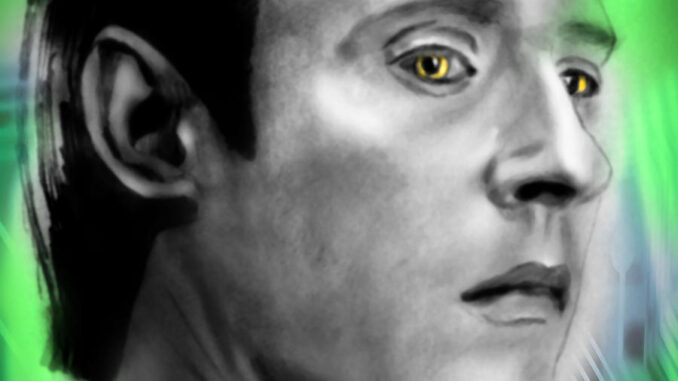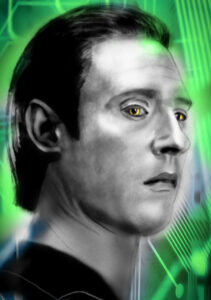
 A hyperintelligent nebula-sized swirl of gas tries to communicate with the crew. Modifications need to be made to the engines in order to handle the crushing gravity of a gas giant’s atmosphere. Crews trapped in alternate dimensions need to figure out how to return home.
A hyperintelligent nebula-sized swirl of gas tries to communicate with the crew. Modifications need to be made to the engines in order to handle the crushing gravity of a gas giant’s atmosphere. Crews trapped in alternate dimensions need to figure out how to return home.
Mindboggling science problems are the bread and butter of Star Trek Adventures games. But the players don’t have near the grasp of science and engineering as the characters do… nor does the Gamemaster. What needs to happen is a shorthand of scientifically exploring the possibilities of what can be done and what must be done to push the known limits of science… or even to push the limits of the technology on the ship.
Star Trek Adventures uses the Scientific Method as the system for working out complex science and engineering tasks. Through using this procedure the galaxy-shattering accomplishments can be broken down into manageable chunks that can be resolved using the game system rules.
The first step is to observe the problem. The characters need to determine what Discipline is coming into play: Science, Engineering or Medicine. Once decided, any character with a score in that Discipline may make a Difficulty 0 roll of that Discipline (probably coupled with Reason) in order to figure out what the group is up against. One of the characters with a high score in that Discipline becomes Research Lead.
Step two is hypothesizing. The players need to guess what the focus of the problem is. Are we talking quantum physics, xenobiology or warp core engineering? The group should come up with three to five hypotheses. The Gamemaster then determines which ones of these sounds like the right path. If none of the hypotheses sounds feasible, the GM gains a point of Threat and orders the players to start over with step two.
Step three is where the dice get rolled: testing. Not knowing which focus the Gamemaster selected to be the correct one, the group sets out to prove their theories. This requires between one and ten successes, depending on how amazingly complex the issue is. The Research Lead chooses a focus from step two and starts testing it, rolling his Discipline in what is essentially an extended test (discussed in a previous article).
Extended tests have time limits. X amount of successes need to be gained before so much time passes. In Star Trek, the crews rarely have the luxury of working at their own pace. They need to accomplish their goals before some horrible disaster happens.
As the Research Lead makes progress testing, they should gain increasing information from the Gamemaster that they’re on the right or wrong track. At any point, the Research Lead can abandon a course of testing and start a new one. When the last success is gained, the miracle of science comes to fruition, and the MacGuffin to solve the plot problem comes into existence.
While describing what the characters are doing, they may want to feel like typical Star Trek characters and talk with the scifi jargon. Luckily, the makers of Star Trek Adventures includes a technobabble table on page 48 of The Operations Division Supplemental Rulebook. With a few rolls you can say such things as, “Reverse the backup tetryon feed relay.”
Let’s say the crew are investigating the abduction of two Orion Syndicate leaders. They discover a prototype missile headed to a known Orion Syndicate-affiliated planet.
Step One: Observe. This is clearly a Science Discipline use. The crew’s Chief Science Officer Stanley becomes Research Lead.
Step Two: The crew spitball what focuses might be behind this situation. The players come up with: Chemistry, Electronics, Quantum Physics and Xenobiology. The Gamemaster determines Chemistry is the right way. The missile will detonate and spew lethal chemicals into the atmosphere.
Step Three: Stanley begins testing his theory. The missile gets beamed onto the ship. Stanley chooses to use Electronics to explore the detonation devices. He rolls with Engineering as his Discipline. He’s excited because he has a focus in Electronics. This gives him a chance to score some extra successes. He scores three successes on the first round of the challenge. The Gamemaster reveals this is a standard detonation system, but the concern seems to be the chemicals mixing in a container within the missile war head. Stanley abandons Electronics as his method of testing and brings in Samantha, who has a focus in Chemistry. She becomes his Research Assistant and provides assisting rolls on the task. Stanley doesn’t have a focus in Chemistry, so it takes a couple more rounds before he gets the five successes the Gamemaster said was needed.
With Samantha’s assistance, a compound is injected into the warhead where the chemicals are being mixed, that turns the chemical mixture from lethal to inert. The crew is safe. Stanley is free to roll on the Technobabble table to explain the process of his success.
Without knowing how missiles or chemical warfare work, we’ve successfully run a challenge in which the leading science minds on the crew study the problem and bring things to a satisfying conclusion before time runs out.
